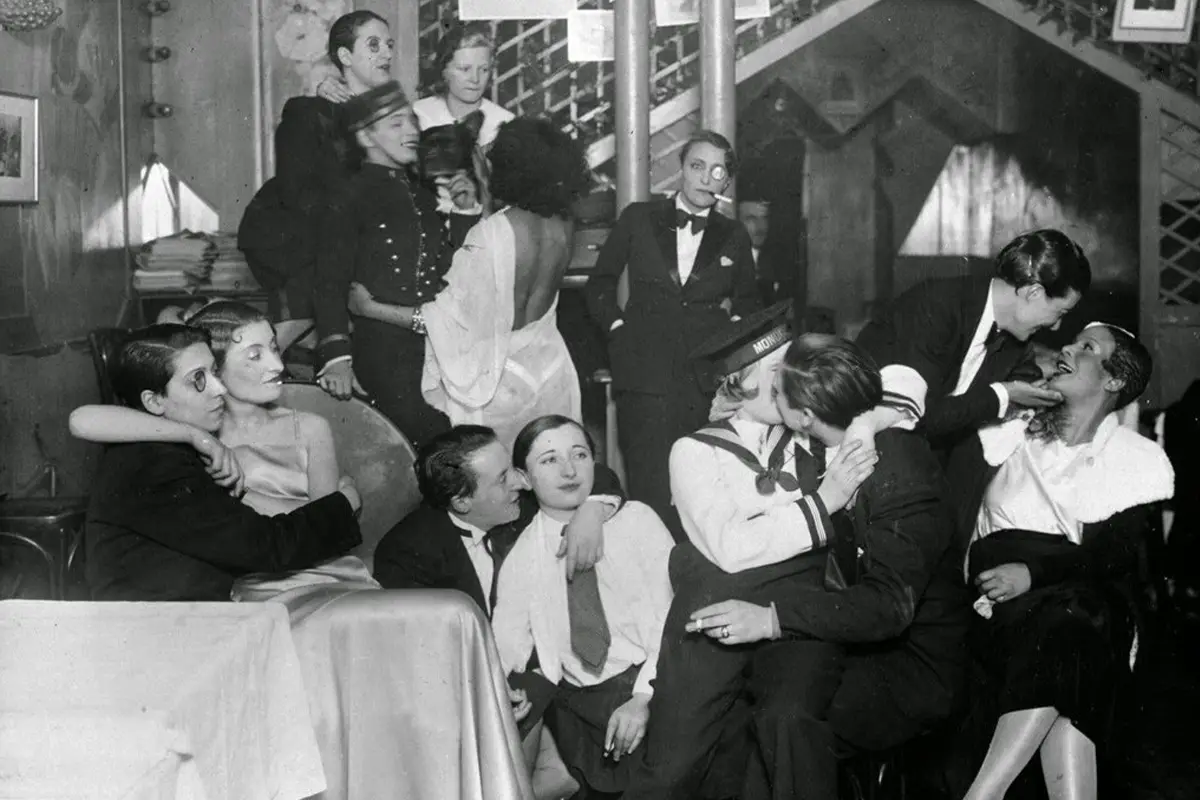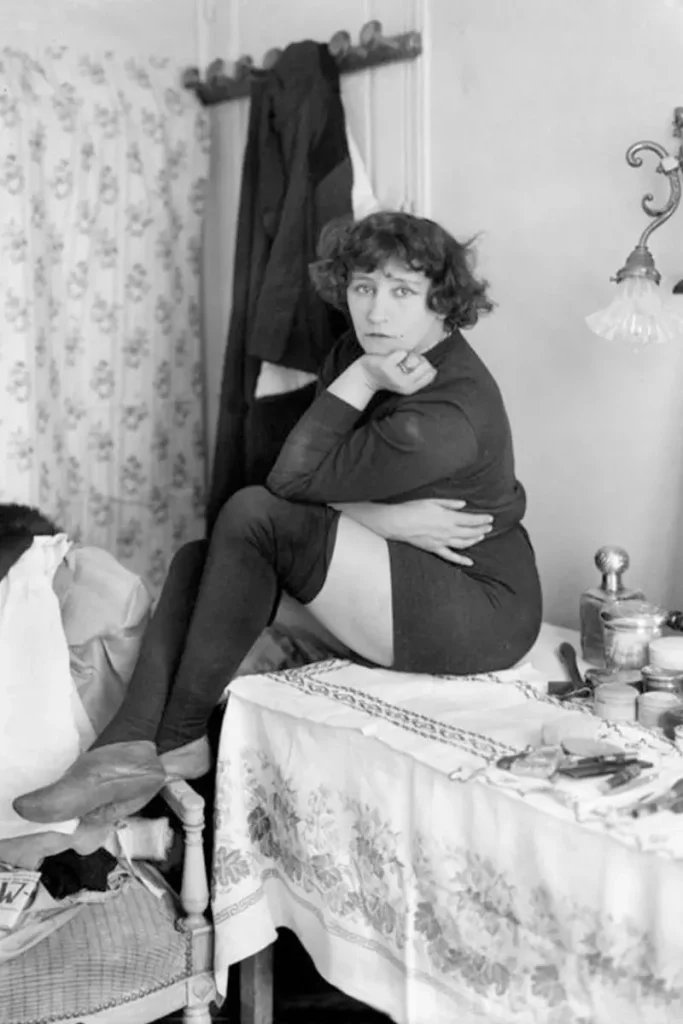Human fluidity. Eleanor Medhurst highlights the value of fashion’s overlooked role in lesbian history, throughout which clothing was a tool of self-expression and community building
Sex, Respect: Putting lesbian fashion histories into the spotlight – the work of fashion historian Eleanor Medhurst
Fashion history is one of those niche interests that has thrived in this digital era, expanding from college classrooms to people’s smartphones. While the internet has given many historians, reenactors, costume designers, and regular history buffs new spaces to share their knowledge and find a community of fellow fashion history enthusiasts, there is little content out there, both in the real and virtual world, about human fluidity, in particular lesbian fashion history. British lesbian fashion historian Eleanor Medhurst has made it her work’s mission to fill this gap, sharing her knowledge on this community’s variegated fashion history online and offline.
In fact, Medhurst is also the author of the non-fiction book Unsuitable: A History of Lesbian Fashion, which is coming out from the London-based indiepent publisher Hurst Publishers on 1st June 2024.
Making diversity more accessible – the start of ‘Dressing Dykes’
After getting her MA in History of Design and Material Culture at the University of Brighton, the Birmingham-based historian has started her blog Dressing Dykes. There, Medhurst takes her readers on a journey to learn more about lesbian history through the lens of clothing, making inaccessible or hard-to-come-by information available to her readers.
Dressing Dykes explained by Eleanor Medhurst
«Part of what led me to start ‘Dressing Dykes’ is that I wanted to do more research into lesbian history, which is something that I’ve continued to do. But I also thought it was key to make these things accessible». Medhurst told us.
«I wanted to make this research accessible, and I wanted people to be able to have free access to things because a lot of the sources I was using and still use are behind paywalls and academic tables, and you’ve got to be affiliated with an institution to be able to see them and read them and put the pieces of history together».
Dykes in LGBTQ+ terminology
Dykes is a derogatory term referring to a masculine lesbian. Sometimes adopted affirmatively by lesbian (not necessarily masculine ones) to refer to themselves. It originated as a homophobic slur for masculine, butch, or androgynous girls or women. Pejorative use of the word still exists, but the term dyke has been reappropriated by many lesbians to imply assertiveness and toughness. The origin of the term dyke is obscure and many theories have been proposed. Most etymologies assert that dyke is derived from bulldyke, which has a similar meaning.
Taking a look at the role of fashion in lesbian history – about human fluidity
The fashion history of human fluidity can be perceived as a tale of minor details, worth a footnote at best. Yet, the history and evolution of our clothing runs in parallel, and it is deeply influenced by our cultural, political, and social history and its twists and turns. In her work, Medhurst highlights the value of fashion’s often overlooked role in lesbian history, throughout which clothing was both a tool of self-expression and community building.
«Fashion plays a huge role in lesbian history, even though it’s not always acknowledged as such, because the lesbian community and all sorts of queer communities have had to exist conscious of how visible they are at any particular moment. So within lesbian communities throughout history, clothes can be a way to signal to each other or to express themselves and say things about themselves they can’t say with their words because it’s not acceptable in one way or another». The fashion historian explains to Lampoon Magazine. «Fashion can be a way of identification, a form of self-expression, and a way to create bonds within a community and to make connections».
While clothing and fashion have been tools for self-identification within lesbian communities of the past, they still fulfill their purpose in the present day, helping those looking into the past trying to find the stories and lives of lesbian groups and individuals to notice what they are seeking. «When you look at lesbian history, fashion and clothing, and self-expression can help you pick out the lesbian possibilities in the past. Suppose you see someone in a photograph, for example, looking a particular way or wearing perhaps a more masculine outfit. In that case, it doesn’t necessarily mean that person is definitely a lesbian, but it means you can go: ‘Let me look more into that’, It’s like a signal to people in the past and still people today, historians and people curious about the past».
Finding lesbian history – how far can we trace lesbian fashion history?
For a long time, tolerance and diversity in lesbian history, much like the history of other queer communities, has been ignored and erased, so much so that finding out as an adult that a widely known historical figure has lived a life we could define as queer is perhaps close to being a universal queer experience.
Given this history of erasure, it can be challenging for people who look back to learn about this community’s history to find these lesbians of the past, as the way people see and define themselves has changed throughout history. Medhurst, though, highlights how history isn’t solely an amalgamation of the facts of the past but also how we can read and be influenced by them today.
«When you trace back and lesbian fashion history, specifically, you can only go to the turn of the 20th century. But that’s not the beginning of lesbian fashion history because there have always been people who’ve experienced their life and themselves in the way that lesbians today do: they just weren’t using necessarily the same terminology», Medhurst said, «Even though for thousands of years, queer women of any kind have been compared to Sappho, the ancient Greek poet from Lesbos, and the women of Lesbos, even if they haven’t been called sapphics or lesbians».
The narrative of human fluidity and lesbian fashion
«This way, even when looking back hundreds of years, one can find people who, while they weren’t calling themselves lesbians and who we can’t label as such, can still be seen as part of a lesbian fashion history». Lesbian history can be seen as a lineage of parts that build up the more recent lesbian fashion history, all of the influences on the lesbian fashion of the last hundred years. An example of this is the figure Queen Christina of Sweden (1626-1689), whose life and fashion Medhurst explores, among others, in her upcoming book.
«She’s always been rumored to have relationships with women, and more recently, she’s been claimed within lesbian history and labeled like an early lesbian figure. No matter what identity she might have had or what her relationships were, she’s still very much part of a lesbian fashion history. Her clothes fit the narrative of what human fluidity and lesbian fashion can be, and people can understand her as a predecessor of later lesbian fashion. You can trace lesbian fashion history back as far as you’re willing to analyze something relevant to lesbian fashion history».
Discussing lesbian fashion history – lesbian fashion trends and symbols over time. Purple: a feature of tolerance and diversity
Fashions within lesbian communities have a long and varied history, characterized at different points by the prevalence of various symbols, colors, and trends. Purple has been a feature of tolerance and diversity
In lesbian history and fashion for a long time, spanning from Sappho’s poems to the play The Captive (La Prisonnière) to the ‘Lavender Menace’ group.
On the other hand, specific lesbian fashion signals have been only used within a particular community or period, like the monocle, which was worn in the 20s and 30s by many upper-class lesbians such as Una Vincenzo, Lady Troubridge, writer Radclyffe Hall’s partner. At that time, this type of corrective lens even had a lesbian bar named after it in Paris: Le Monocle, whereas photographic evidence shows many patrons sported the titular accessory.
At some points in history, lesbian and mainstream fashion didn’t interact, while during others, lesbian fashion had a profound influence on mainstream fashion. In the 1920s, in the UK, the editor and the fashion editor of British Vogue were a lesbian couple, Dorothy Todd and Madge Garland. «They were promoting the queer community in the arts, bringing in all of these people they knew. The influences of the day, they were queer people».
The contribution of lesbian fashion doesn’t end with its influence on mainstream fashion, as it has been a source of anti-fashion and sub-cultural force. While shunned by the mainstream in the past, many features of more contemporary lesbian fashion have been taken up by it in recent years. «There’s this stereotype of lesbians wearing dungarees, overalls, and boots, and these days, these clothes are perceived as fashionable, which I see as a good thing. People often say to me: ‘Do you think that’s an appropriation of lesbian culture, of queer women’s fashion culture?’ but if any woman wants to wear more comfortable clothes, that’s great».
News from the publishing world – What can readers expect from Medhurst’s Unsuitable: A History of Lesbian Fashion
Lesbian fashion historian Eleanor Medhurst’s upcoming book Unsuitable: A History of Lesbian Fashion is the first ever written about lesbian fashion history and a labor of love from its author.
Made up of five distinct thematic parts, this book stems from the work Medhurst has done and shared on ‘Dressing Dykes’, but it puts it all in a cohesive narrative, weaving together stories from around the world and throughout hundreds of years of history.
«I’m pleased to be able to introduce people to why lesbian fashion history matters, why this is a big way to look at any history, and to look at fashion history through the lens of lesbians, to look at lesbian history through the lens of clothes, and to look at queer history through lesbian fashion. A lot can be said about the clothes worn by lesbians in the past, the recent past, and even today, and that needs a space to shine».
Eleanor Medhurst
Eleanor Medhurst is a lesbian fashion historian. She has a BA in Fashion and Dress History, and a MA in History of Design and Material Culture. Her first book ‘Unsuitable: A History of Lesbian Fashion’ will be released by Hurst Publishers on the 1st of June 2024.




















